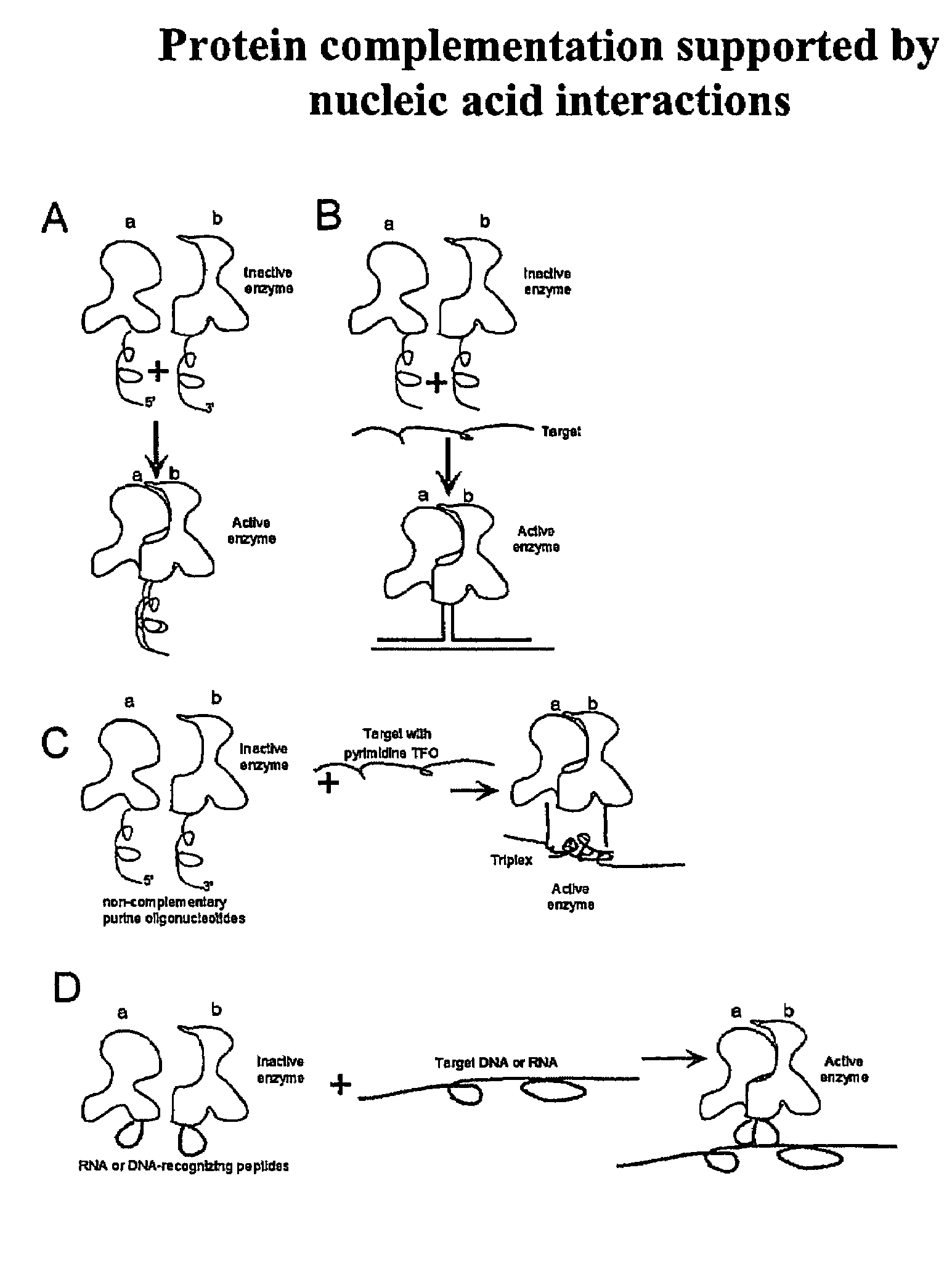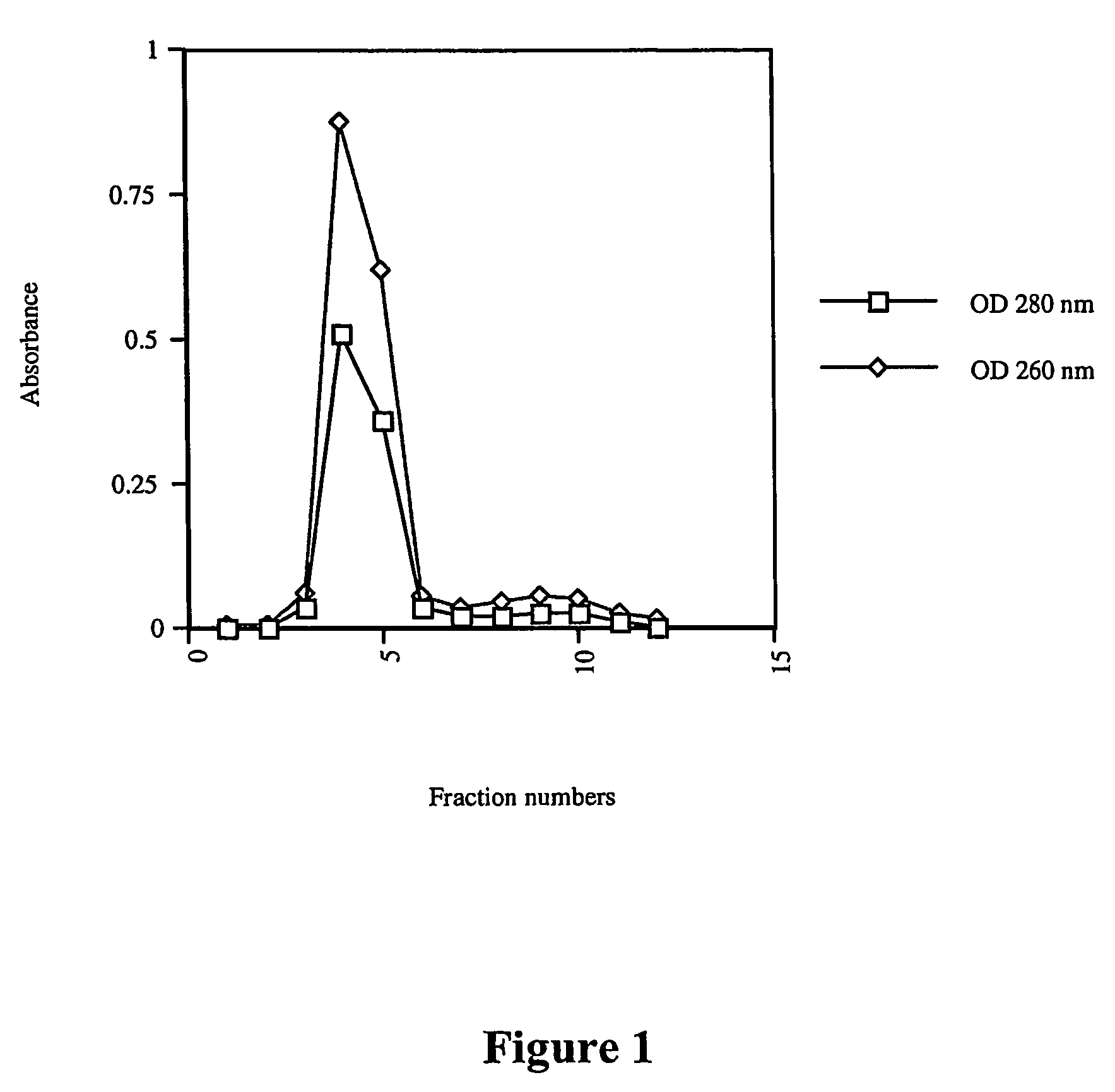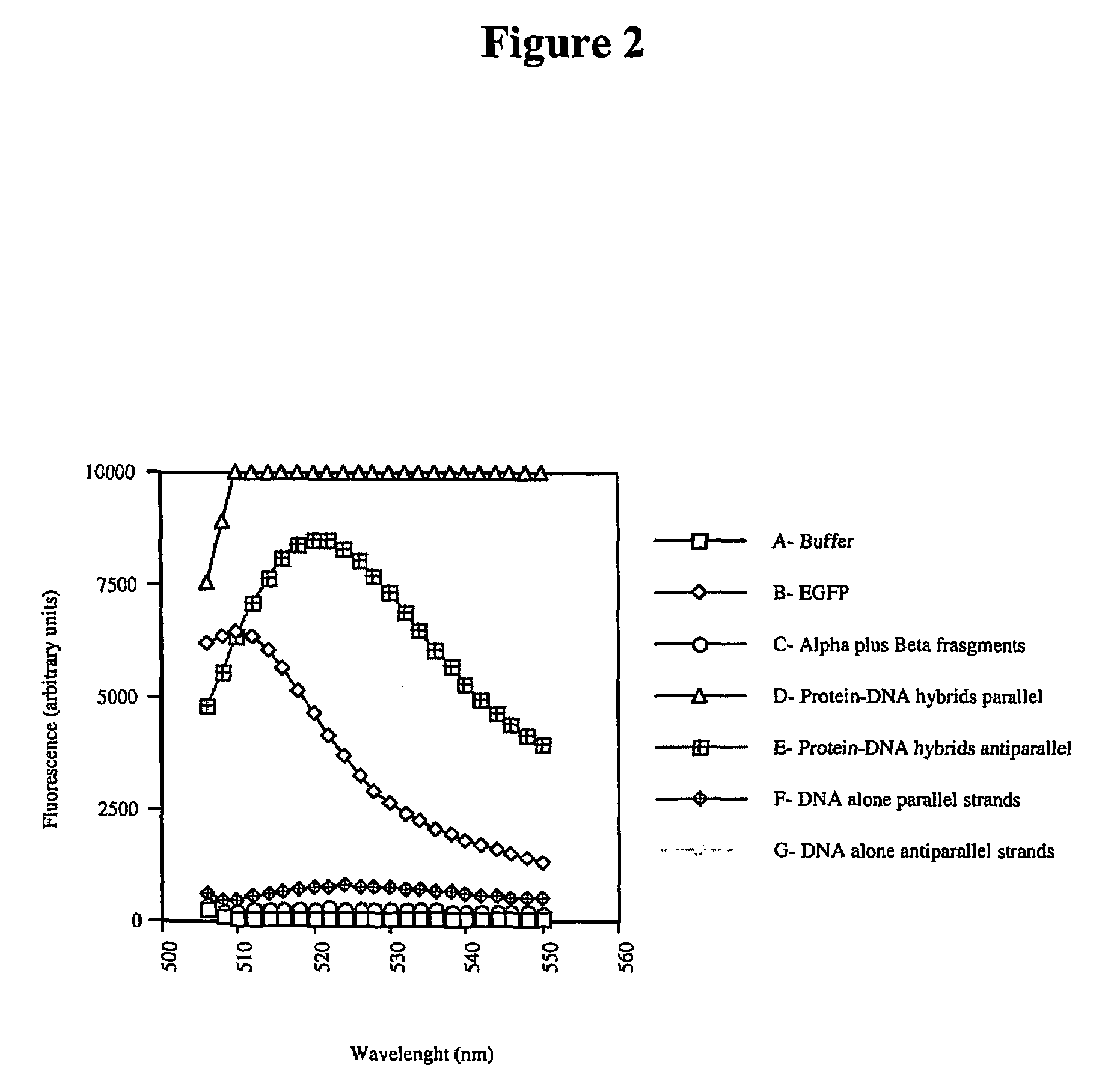Nucleic acid supported protein complementation
a nucleic acid and complementation technology, applied in the field of in vivo and in vitro detection of nucleic acid targets, can solve the problems of low hybridization sensitivity, all these approaches are probe-based, and the oligonucleotide probes for rna detection in vivo are their fast accumulation in the nucleus, and achieve high affinity
- Summary
- Abstract
- Description
- Claims
- Application Information
AI Technical Summary
Benefits of technology
Problems solved by technology
Method used
Image
Examples
example 1
DNA-Assisted Protein Complementation Using 21-Mer Complementary Oligonucleotides as Interacting Partners and Enhanced Green Fluorescent Protein (EGFP)
[0102]DNA assisted protein complementation was assayed by mixing two protein-DNA hybrids based on the Enhanced Green Fluorescent Protein (EGFP) molecule. The following steps were done to perform the experiments.
Cloning, Expression and Purification of Polypeptides
[0103]The following genes were obtained by PCR and cloned in the TWIN-1 vector (New England Biolabs, MA), as C-terminal fusion of Ssp DNAB intein. Construct 1: Full EGFP-1 (Clontech, CA). Construct 2: α-cys polypeptide containing the 157 amino acid N-terminal portion of EGFP, plus a C-terminal cysteine. Construct 3: β-cys fragment polypeptide containing the remaining 82 amino acid C-terminal portion of EGFP, plus an N-terminal cysteine. These constructs were verified by sequencing.
[0104]The proteins were expressed in BL21(DE3)pLys competent cells (Stratagene, CA). Induction was...
example 2
Protein-Complementation Assay Supported by Triplex DNA Formation and Applied in Rolling Circle Amplification
[0119]The general purpose of the present invention consists of developing a new universal and robust method for detection of DNA and RNA targets. The method can be also used in protein-protein interaction studies. One embodiment of the invention utilizes the protein fragment complementation assay (PCA). PCA relies on re-association of two inactive protein fragments into an active enzyme if and only if there are additional interactions assisting protein re-association. In the original PCA method developed by Michnick these are protein-protein interactions, which support re-association of the marker enzyme (1). In our method, the enzyme activity relies on DNA-DNA or DNA-RNA or RNA-RNA interactions (FIGS. 4 and 5).
[0120]In one embodiment, a single-stranded DNA target is detected in the presence of two triplex forming oligonucleotides coupled with the inactive enzyme fragments suc...
PUM
| Property | Measurement | Unit |
|---|---|---|
| volume | aaaaa | aaaaa |
| volume | aaaaa | aaaaa |
| voltage | aaaaa | aaaaa |
Abstract
Description
Claims
Application Information
 Login to View More
Login to View More - R&D
- Intellectual Property
- Life Sciences
- Materials
- Tech Scout
- Unparalleled Data Quality
- Higher Quality Content
- 60% Fewer Hallucinations
Browse by: Latest US Patents, China's latest patents, Technical Efficacy Thesaurus, Application Domain, Technology Topic, Popular Technical Reports.
© 2025 PatSnap. All rights reserved.Legal|Privacy policy|Modern Slavery Act Transparency Statement|Sitemap|About US| Contact US: help@patsnap.com



